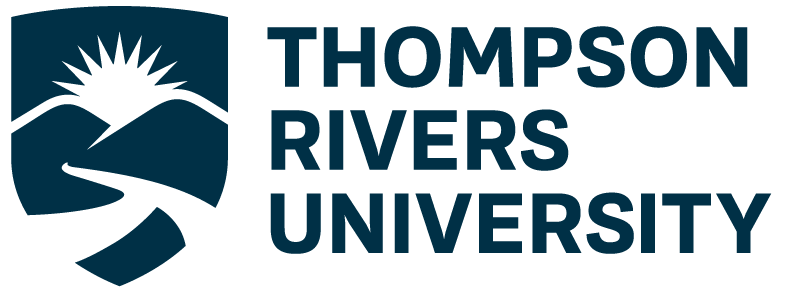Cross-Checking Across Sources
Overview
Cross-checking across sources refers to the practice of verifying information by consulting multiple independent and reliable sources to ensure its accuracy and credibility. Instead of relying on a single source, this process involves comparing the data, facts, or claims presented by different authors, organizations, or platforms. By cross-checking, you reduce the risk of accepting biased, incomplete, or incorrect information. This method is widely used by researchers, journalists, and fact-checkers to verify claims and strengthen the reliability of the information used in academic papers, news reports, and any form of research. It also involves triangulating the information, meaning that at least three trustworthy sources should be consulted to confirm the validity of the information being verified.
Learn the Process
Don’t rely on a single source
The first rule in information verification is not to rely solely on one source. If a source is the only one providing information, it is crucial to look for other sources to confirm its validity. This is especially important when using AI tools, such as ChatGPT, to gather information. While AI can be incredibly useful, it’s essential to understand that AI systems may occasionally produce what are known as “hallucinations.”
Hallucinations in AI refer to instances when an AI generates responses that are factually incorrect, fabricated, or misleading, even though the language model is confident in its answers. These inaccuracies can occur because AI models, like ChatGPT, are trained on vast amounts of data from diverse sources, but they don’t actually “understand” the content in the way humans do. Instead, they predict the most likely response based on patterns in the data. This means that AI can confidently produce content that sounds reasonable but may not always be true or verifiable.
An AI might generate a detailed but completely incorrect citation or make claims about a historical event that never happened. The AI could mix up dates, authors, or even create information based on patterns it has learned, without any underlying factual accuracy. These “hallucinations” often go unnoticed, especially when the AI is producing text that seems coherent and logical on the surface.
This is why cross-checking information from multiple trusted and reliable sources is so important. Whether you’re using an AI tool or any other resource, confirming the data with academic journals, government reports, or peer-reviewed studies ensures that the information you rely on is credible. Relying solely on one AI-generated answer without verifying it can lead to mistakes in your research, which is why using AI as a starting point or a supplement, rather than the final authority, is always a better approach.
Consult Trusted Sources
In academic settings, a reliable source is one that provides accurate, verifiable, and evidence-based information, which is essential for producing high-quality work. These sources are typically written by subject matter experts and published by reputable institutions such as universities, government agencies, or peer-reviewed scientific journals. They offer an objective, up-to-date, and well-supported perspective, allowing students and scholars to build strong arguments and avoid misinformation. Using reliable sources not only strengthens the credibility of academic work but also promotes critical thinking and intellectual rigor.
Characteristics of Reliable Sources
- Authorship: Written by experts or professionals in the field.
- Accuracy: Information is fact-checked and supported by evidence.
- Objectivity: Free from bias or personal opinions.
- Currency: Up-to-date and relevant to the topic.
- Publisher: Comes from reputable institutions (e.g., universities, government agencies, respected media outlets).
Examples of Reliable Sources
- Canadian Universities
Websites and publications from institutions such as:- University of British Columbia (UBC)
- University of Toronto
- McGill University
- Thompson Rivers University (TRU)
- University Libraries
The TRU Library offers a guide on how to evaluate information resources for quality. - Academic Databases
Accessible through most Canadian universities:- JSTOR (Humanities and Social Sciences)
- PubMed (Medical Sciences)
- ERIC (Education)
- Google Scholar (General academic research)
- Government Publications
Reports and statistics from:- Statistics Canada
- Government of Canada
- Peer-Reviewed Journals
Published by academic associations or university presses, such as:- Canadian Journal of Education
- Canadian Medical Association Journal
Triangulate Information
Triangulating information means consulting at least three different and reliable sources to verify a fact provided by artificial intelligence. This method is essential to get a more complete and accurate view of the information generated by AI, as the responses from these tools can sometimes contain errors or “hallucinations” (incorrect or fabricated information). By cross-checking AI-generated information with trusted sources, you can ensure that what you are using is true and valid.
Certain types of data are more prone to needing verification, especially when they come from artificial intelligence.
First, factual data and numbers should be carefully verified, as AI sometimes generates statistics, dates, or facts that are incorrect or outdated. If AI gives you a number or claim about a topic, it’s essential to compare that data with reliable sources like academic databases, government websites, or peer-reviewed scientific publications.
Secondly, scientific and technical information may also require verification. AI often generates simplified explanations of complex concepts, but these may not be entirely accurate or up to date. To verify scientific or technical topics, it is important to consult academic research, scientific articles, and specialized sources backed by experts in the field.
When it comes to historical information or current events, it is crucial to compare what AI says with verified sources, as AI may mix facts or present events incorrectly. Trusted sources include academic books, historical databases, recognized news outlets, or official reports. Since AI does not have access to real-time data, it can present outdated information on recent events.
Using artificial intelligence to gather information always requires cross-checking with multiple trusted sources to ensure accuracy. Consulting at least three reliable sources helps you obtain a more precise view and prevents the spread of misinformation, allowing you to make decisions based on verifiable facts.
Compare and Contrast
To compare what different sources say about the same topic and understand discrepancies, it’s important to ask yourself a series of key questions that will help you evaluate the validity and reliability of the information. Here are some questions you can ask yourself:
- What sources are providing this information?
Ask yourself whether the sources you’re using are reliable, well-established, and authoritative on the topic. Are they academic publications, government websites, or reputable media outlets? The source directly influences the reliability of the information. - How is the information presented?
Compare the format and approach of the information. Does one source provide more context or details than another? Sometimes, a more detailed and well-researched source is more reliable than one offering only superficial information. - Are there differences in the facts presented?
If the sources provide contradictory data or facts that don’t match, how are these discrepancies explained? Ask yourself if any of the sources have interests or biases that may have influenced how the information is presented. - How up-to-date are the sources?
Is one source more current than another? Information may have changed over time, especially on topics like public policy or scientific discoveries. It’s important to prioritize the most recent sources if the topic is evolving. - What evidence or backing is provided?
Ask yourself whether the source includes citations, references, or previous studies that support the claims being made. Information based on solid evidence tends to be more reliable. - Is the source of the discrepancies acknowledged?
If you find significant differences between sources, does any of them explain why the numbers or facts differ? Some sources may clarify discrepancies, for example, by stating that they are using different methodologies or that their data comes from different points in time. - What is the purpose of each source?
Ask yourself if any of the sources has a clear persuasive purpose or is biased in some way. Some sources may have commercial or political interests, which could influence how they present the information. - What do experts say about the topic?
Do the sources include opinions from experts in the field? Check if the sources cite researchers, professionals, or academics in the area, as their authority can help validate the information. - How do the sources compare in terms of overall reliability?
Finally, make a general assessment of the sources. Which one carries the most weight in terms of credibility and authority? If multiple reliable sources agree, the information is more likely to be accurate.
Asking yourself these questions will help you dig deeper into discrepancies and assess which source is the most reliable and why. When comparing sources, it’s not only important to find matches but also to understand why there are differences and how those differences affect the accuracy of the information.
1. Be Aware of Bias in AI
- AI tools, like ChatGPT, can reflect biases because they are trained on data from various sources, some of which may not be entirely neutral. It’s crucial to cross-check AI-generated information with trusted, objective sources, like academic studies, reputable news outlets, or government websites, to ensure accuracy and minimize bias.
- Look for sources that are recognized for their objectivity, such as peer-reviewed journals, government reports, or non-governmental organizations (NGOs) that maintain high standards of accuracy and impartiality.
2. Check the Information Against Reliable Sources
- AI can provide useful summaries and insights, but it’s important to validate the information by consulting at least three independent, reliable sources. Compare the data, facts, or claims AI provides with academic journals, government websites, and peer-reviewed databases.
- When AI presents a claim, validate it through trusted academic platforms like Google Scholar, PubMed, or government sites like StatCan to verify its credibility and ensure it’s backed by verified data.
3. Use AI as a Supplement, Not a Primary Source
- While AI is a powerful tool for generating ideas and summarizing information, it should not be your primary source for academic or research purposes. It’s essential to always verify facts and data from authoritative sources.
- Use AI as a guide or complement to your research, but always rely on peer-reviewed articles, government publications, or official databases as your primary sources of information.

